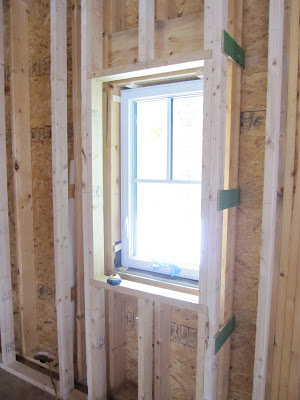
For the last 5 months, Joe Sykes has been here day-in and day-out helping us build our place. If you've been following our progress on the blog, almost every post either shows or mentions him. He and I wrapped up the last of the major framing work a week or so ago and with this ends the arrangement we've had up till now. I thought this would be a good point to both acknowledge our appreciation for Joe's help, but also to give a slightly more in depth picture of this unique guy.
We met Joe through contra dancing, and if you have contra danced anywhere in New England over the last decade or two, you've probably met him too. He is an avid and excellent dancer and it is not unlike him to drive great distances to dance all weekend and then be back first thing Monday morning ready to roll. There isn't much that slows him down except for maybe a plate of poutine somewhere north of the border in the middle of a long bike journey.
In anticipation of the house project, I knew I was going to need someone to work with and I'd be mulling it over a bit when, one day in March, Joe called up and said he had a "crazy idea" which was his offer to come down to the valley, set up his tent and help me out. I took to the idea right away and we kept in touch leading up to the start of the project. As planned, Joe set up his very cool old-school canvas tent (old school as in Early American) and started staying here Monday morning through Friday afternoon. From the get-go we fell into a friendly raport and had fun throughout, even when it was cold, or wet, or steep, or heavy, or complicated. Joe never complained, never shirked, and was always ready to go, sometime more then I was, and I appreciated this throughout. Joe built a number of houses with his dad, and has spent most of his career in the building industry.
Beyond being a crack carpenter and contra dancer, Joe does English Country dancing, Cajun dancing, Morris dancing, plays some nice fiddle, share's my enthusiasm for bikes and long long rides, takes part in revolutionary war reenactments, and last but not least makes, sells, and goofs around with hula hoops. These are works of art.
Its nice to work with someone with whom you share so much in common, be it bikes, contra dancing, music, or building. We could easily spend a day listening to either one of our I-pods on shuffle and be quite happy. I find the music or radio choice really sets the mood on a work site and there was no big tug-of-war in this department.
Its nice to work with someone with whom you share so much in common, be it bikes, contra dancing, music, or building. We could easily spend a day listening to either one of our I-pods on shuffle and be quite happy. I find the music or radio choice really sets the mood on a work site and there was no big tug-of-war in this department.
One anecdote about Joe. One day a visitor was here and sailing came up in the discussion. Someone asked Joe if he'd had much to do with boats and he said "No, not really". The conversation moved on and that was it. Sometime later in another discussion I heard Joe saying something like "My dad and I rebuilt the Peterson 28 and sailed it on the lake until my dad sold it to some folks on Martha's Vineyard, so I trailered it down, launched it, rigged it and then sailed it across the Sound, helped the new owners commission it and did a short cruise with them". What? I thought he hadn't had anything to do with sailing. That's Joe. Getting to know him has been fun because there is always some funny and unexpected aspect of his life that you'd never guess was there that comes out and can't believe he'd hardly mentioned it.
So, I'm working on my own for a while, but have no fear, Joe will be back in a month or two for the next round.
So, I'm working on my own for a while, but have no fear, Joe will be back in a month or two for the next round.

























